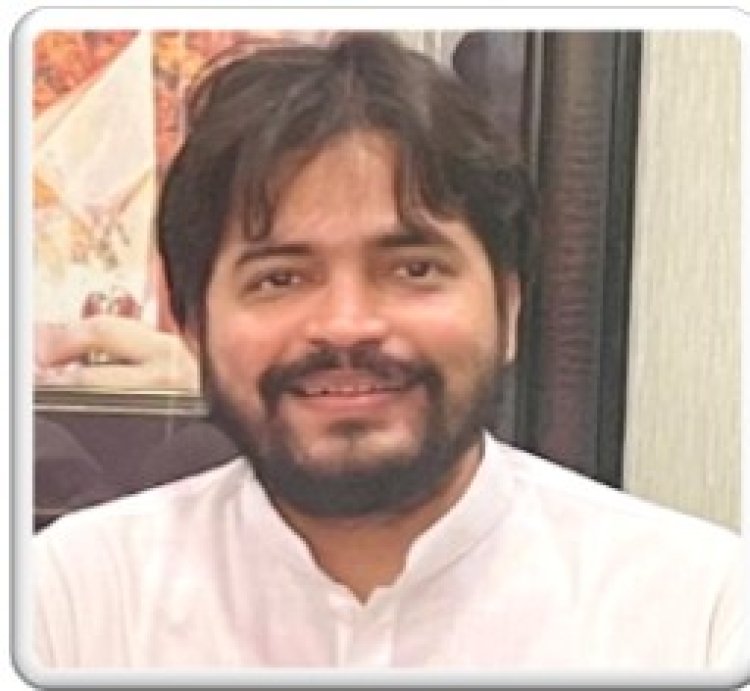The Great Indian Paradox: Fourth-Largest Economy, Millions Still Struggle
By Shivam Malaviya Ex Cyber Crime Expert Kanpur, June 18, 2025

India has officially become the world's fourth-largest economy in 2025, with GDP reaching $4.19 trillion according to IMF data. Yet this milestone masks a troubling reality that exposes fundamental failures in the current government's approach to development.
The Numbers Don't Add Up
While officials celebrate economic rankings, the ground reality tells a different story. Despite claims that poverty has fallen below 5%, India's unemployment rate stands at 7.9%, with youth unemployment at a staggering 16%. More damning is that 7.1% of educated individuals remain unemployed—the highest rate among all education levels.
Inequality Reaches Colonial Levels
The most shocking revelation comes from the World Inequality Lab: India's richest 1% now control 40.1% of national wealth—the highest concentration in six decades. Their income share of 22.6% hasn't been seen since 1922.
Researchers conclude that today's "Billionaire Raj" is more unequal than the British colonial era.
The bottom 50% of Indians survive on just ₹71,000 annually while the top 10,000 earn ₹480 million—a gap of 2,069 times the national average. This represents a catastrophic policy failure that has created a two-tier society.
The Malnutrition Scandal
Perhaps most shameful is India's rank of 105th out of 127 countries in the Global Hunger Index. With 35.5% of children stunted and 18.7% wasting away, an estimated 200 million Indians remain malnourished—equivalent to Brazil's entire population. Anaemia affects 57% of women and 67% of children.
This malnutrition crisis alongside space missions and vanity projects highlights grossly misplaced priorities.
Policy Failures Exposed
Agricultural Neglect: Nearly 45% of the workforce depends on agriculture, which contributes only 18% to GDP, indicating massive hidden unemployment. Poor monsoons, low crop prices, and stagnant productivity reflect systematic neglect.
Manufacturing Shortfall: Despite tall claims about "Make in India," manufacturing remains stuck at 16-17% of GDP, far from the 25% target, limiting job creation.
Healthcare Underfunding: While barely taxing the wealthy, the government spends among the world's lowest on public healthcare, creating a system where quality care remains a luxury.
Employment Crisis: Despite economic growth, job creation has failed spectacularly. The labor force participation rate of 49.6% is the lowest among peer countries, with female participation at just 24.1%.
The Human Cost
Agriculture employs nearly half the population but receives minimal government attention compared to corporate- friendly policies. The informal sector dominates employment with low wages and no security. Meanwhile, the wealthy enjoy tax breaks while public services crumble.
Course Correction Needed
The current model has created what economists call a "Billionaire Raj" benefiting a tiny elite while leaving hundreds of millions behind. Real development requires:
- Employment generation over GDP headlines
- Massive healthcare and education investment instead of vanity projects
- Progressive taxation to address extreme inequality
- Agricultural revival for the largest workforce segment
- Manufacturing focus for quality job creation
· Treating malnutrition as a national emergency
Conclusion
Becoming the fourth-largest economy means nothing when viewed against persistent unemployment, colonial-level inequality, and widespread malnutrition. The true measure of progress lies in citizen welfare, not GDP figures.
The government's celebration rings hollow when millions remain unemployed despite education, when wealth concentration exceeds British colonial levels, and when children suffer malnutrition while billions are spent on prestige projects.
India stands at a crossroads: continue the current path of crony capitalism benefiting the few, or pivot toward inclusive growth that uplifts all citizens. The choice will determine whether this economic milestone becomes meaningful progress or remains a hollow achievement built on the suffering of the many for the benefit of the few.
The fourth-largest economy tag is meaningless if it cannot feed its children or employ its youth.
Shivam Malaviya is a former Cyber Crime Expert turned investigative journalist covering economic policy and social development. Views expressed are personal and based on publicly available data and research.
What's Your Reaction?




















